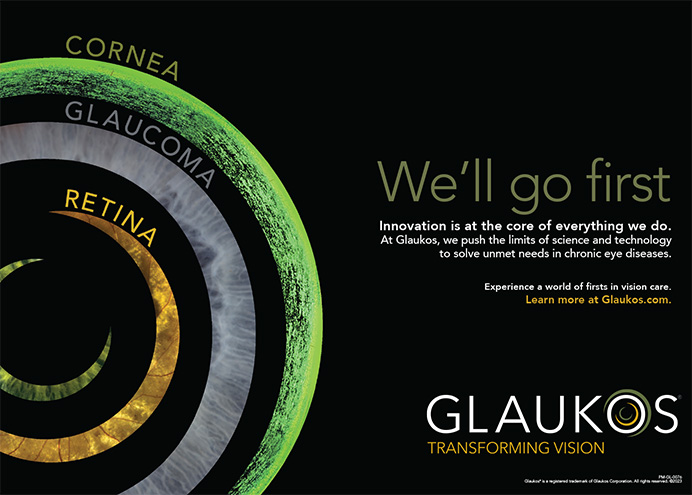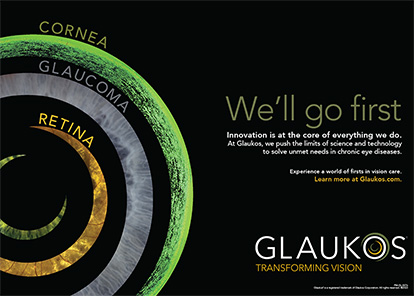IOLs that minimize spherical aberration represent a new means of restoring the vision of cataract patients, but this technological advance also poses new challenges and opportunities for billing and reimbursement. At present, three different IOLs are designed to manage spherical aberration: the Acrysof IQ (Alcon Laboratories, Inc., Fort Worth, TX); the Tecnis (Advanced Medical Optics, Inc., Santa Ana, CA), and the Sofport AO (Bausch & Lomb, Rochester, NY). The Centers for Medicare & Medicaid Services (CMS) have designated the Acrysof IQ and Tecnis IOLs as New Technology IOLs (NTIOLs). The Sofport AO is being considered for this label.
REIMBURSEMENT FOR NTIOLs
In 1994, Congress directed the Health Care Financing Administration (now known as the CMS) to establish regulations to recognize NTIOLs for additional reimbursement. On June 16, 1999, the Health Care Financing Administration published final regulations that outlined the application process for manufacturers as well as the payment methodology for ASCs. The CMS designates NTIOLs based upon a lens' FDA-approved product labeling as well as whether the IOL is likely to yield clinical advantages, including patients' decreased dependence on glasses after cataract surgery and improved postoperative visual acuity or reducing their degree of astigmatism.
On January 27, 2006, the CMS published a notice in the Federal Register1 identifying the Tecnis lens as eligible for additional reimbursement as an NTIOL under a newly created category the agency calls reduced spherical aberration. Tecnis models Z9000, Z9001, and ZA9003 are included in this category. On May 19, 2006, the CMS added the Acrysof IQ to this new category. Medicare allows $50 for the NTIOL in addition to the facility fee for cataract surgery. The implantation of a traditional monofocal lens is subject to the usual deductible and copayment. This added reimbursement is effective for lenses implanted in an ASC on or after February 27, 2006. The supplementary reimbursement continues through February 26, 2011. There is no extra Medicare payment for hospitals when surgeons implant an NTIOL.
OTHER THIRD-PARTY PAYERS
Medicare Advantage and third-party payers are not obliged to follow the CMS' ruling concerning NTIOLs. Some payers make provisions in their contracts with hospitals and ASCs to pay for IOLs separately, but most emulate Medicare and pay for IOLs as part of the facility fee.
MINIMIZING AMETROPIA
Because the NTIOLs address a higher-order aberration, surgeons must also minimize lower-order aberrations for their patients to receive the maximum benefit. For individuals with little or no astigmatism, precise biometry facilitates the selection of an appropriate dioptric power to minimize or eliminate residual refractive error attributable to myopia or hyperopia. Ophthalmologists should consider the surgical correction of corneal astigmatism (ie, limbal relaxing incisions, corneal relaxing incisions, astigmatic keratotomy, LASIK) to minimize or eliminate significant corneal astigmatism (> 0.75D).2
Medicare covers cataract surgery but not the surgical correction of corneal astigmatism or the associated tests that are necessary such as corneal topography, pachymetry, and refraction. Although surgeons may recommend an aspheric IOL to a cataract patient for the added benefit it offers, their reimbursement for conventional cataract surgery remains the same. Only if the ophthalmologist recommends the surgical correction of corneal astigmatism as a secondary procedure does the situation change. Then, there are additional professional fees for further diagnostic testing and refractive surgery that are the patient's responsibility as noncovered services.
CPT AND HCPCS CODES
Two CPT codes describe conventional cataract surgery with the implantation of an IOL. CPT code 66984 is described as extracapsular cataract removal with the insertion of an IOL prosthesis (one-stage procedure), manual or mechanical technique (eg, I/A or phacoemulsification). CPT code 66982 is described as extracapsular cataract removal with the insertion of an IOL prosthesis (one-stage procedure), manual or mechanical technique (eg, I/A or phacoemulsification), complex, requiring devices or techniques not generally used in routine cataract surgery (eg, an iris-expansion device, suture support for an IOL, or a primary posterior capsulorhexis) or performed on patients in the amblyogenic developmental stage. These codes apply to both the surgeon and the facility where the surgery is performed.
The HCPCS code Q1003, defined as a New Technology IOL, reduced spherical aberration, which was first published in January 2006, should be used by ASCs to identify the Acrysof IQ or Tecnis IOL but not the Sofport AO lens on the same claim as the facility fee. Hospitals do not use this code.
The CPT handbook does not have a specific code to describe the surgical correction of preexisting astigmatism, not surgically induced. The only code available is 66999, which is described as an unlisted procedure, anterior segment of the eye. For the sake of clarity and line-item bookkeeping, this miscellaneous code is useful to track this noncovered service internally. In some situations, it may be necessary to include the code on the claim for reimbursement. A commercial payer may require it, or the patient may desire a denial from Medicare or another payer for submission to a secondary payer. Some patients just want something official on an Explanation of Medicare Benefits to corroborate what they were told by a staff member.
DIAGNOSIS CODES
A series of ICD-9 codes apply to diagnosis. For cataract surgery, one of the codes in the 366.xx series is normally used. For refractive services, one of the codes in the 367.xx series is given.
SAMPLE CLAIMS
Each entity (clinic and facility) should file its own claim, even if owned by the same person or corporation, because contracts with payers are discrete and funds should not be comingled.
Figure 1 illustrates the surgeon's Medicare claim for conventional cataract surgery with one of the NTIOLs. There is nothing new or surprising about it.
Figure 2 illustrates the ASC's Medicare claim for the same procedure. A sample UB-92 claim for the hospital outpatient department is omitted from this discussion, because it does not differ from surgery with any monofocal IOL.
Figure 3 exemplifies the surgeon's Medicare claim for a combined procedure of cataract surgery and the surgical correction of corneal astigmatism. Add modifier GY to procedural code 66999 on the CMS-1500 claim form to notify the carrier that you performed a procedure that is not a Medicare benefit and the beneficiary requested that the physician file a claim anyway.
Figure 4 shows a comparable claim for the ASC.
LEVELS OF PAYMENT
Table 1 describes Medicare's payment rates for providers who accept assignment on their claims for reimbursement. Of course, noncovered services such as the surgical correction of corneal astigmatism are not subject to assignment provisions, and the surgeon and the facility are free to charge their customary fees. Consequently, when the patient elects to have cataract surgery as well as refractive surgery during the same operative session, it is necessary to delineate all of the charges?both covered and not?and the effect of the contractual adjustments on the covered services (Table 2). If the patient will be financially responsible for noncovered services, it is a good policy to memorialize that fact and obtain written agreement. For Medicare beneficiaries, use a Notice of Exclusion from Medicare Benefits (NEMB); for non-Medicare beneficiaries, use a Notice of Exclusion from Health Plan Benefits (NEHB). These forms are available at http://www.corcoranccg.com. Although neither the NEMB nor NEHB is mandatory, both are highly recommended because these forms mitigate the potential for misunderstandings and acrimony following surgery. In the worst cases, patients who did not obtain the expected outcome ask for refunds based on alleged misinformation or lack of clarity about financial responsibility.
CONCLUSION
IOLs that minimize spherical aberration provide an added benefit to patients. For the two IOLs formally designated NTIOLs by the CMS, Medicare pays a modest premium ($50) to ASCs that use them. To get the best results from these IOLs, surgeons must also consider another very common ametropia, astigmatism. The surgical correction of corneal astigmatism is, in the vast majority of cases, a noncovered procedure under the Medicare program. Beneficiaries should expect to pay for any noncovered items and services.
Kevin J. Corcoran, COE, CPC, FNAO, is President of Corcoran Consulting Group in San Bernardino, California. Mr. Corcoran may be reached at (800) 399-6565; kcorcoran@corcoranccg.com.


